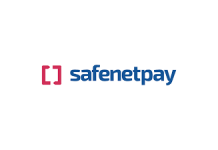The Money Laundering Risks of E-Commerce

- Natalie Redman, at Freelance Writer
- 05.02.2022 09:30 am Fraud detection , Freelance writer for many clients across multiple industries. Natalie has two years of copywriting experience. Natalie has a wide range of experience copywriting for web pages for businesses across many industries. She’s also an owner of two blog websites and a Youtube content creator.
For any modern-day business, the digital world has helped provide a lot of opportunities. We’ve seen the birth of E-Commerce, a new industry that has revolutionized the way many of us shop.
However, like with anything on the internet, there are always risks. Cyber attacks are rife and occurring more frequently than ever. With many businesses having to work from home, a lot more individuals and organizations had become vulnerable.
On the other hand, global E-Commerce is one that rose to dizzying heights as the brick-and-mortar stores were closed during the pandemic. Although it’s a great time for businesses to sell their good and services online, it also makes it useful for money launderers to take advantage of this too.
In this article, you’ll learn more about the growth of E-Commerce and the risks that can come with money laundering in this sector.
The growth of E-Commerce
As a global market, the growth of E-Commerce rocketed after the pandemic hit and as of January 2021, sales hit $4.891 billion. In 2024, it’s projected by experts to reach a mammoth $6.388 billion. Suffice to say, it’s a rich industry to get into, especially if you’re a new business that’s looking to sell online.
It makes sense that a lot of businesses are turning their heads towards the internet for selling, particularly as department store sales have dropped over the years due to the rise of the web. Most of us will shop directly from our phones, with 51% of today’s online shoppers using their mobile devices.
How are E-Commerce businesses exploited by criminals?
There are a number of ways that criminals can use the rouge of E-Commerce businesses to exploit those who willingly make purchases on these sites. With there being so many websites selling goods and services, it can be easy enough to land on one that isn’t legitimate.
Fraud against customers by failing to deliver goods or services
As a customer, when you’re shopping online, you expect to make payment and in return, you’ll receive whatever it is you’ve paid for. Criminals exploit these customers by failing to deliver and effectively committing fraud.
Stealing bank card data
Many will trust the stores they shop online with, handing over confidential information and more importantly, their financial details. With that being said, many of these criminals will steal this bank card data in order to make their own purchases.
Creating E-Commerce businesses for illicit transactions
Just like they do with physical stores, they can also do on digital platforms. Fraudsters and criminals of this world will create E-Commerce businesses as a disguise for illicit transactions. For example, accepting bank card payments for drugs or other dangerous or illegal services.
Using online marketplaces to move money about
In order to help lose the paper, or in this case digital trail of the money they’ve stolen, criminals will use online marketplaces as a way to move their money around. Platforms like Amazon or eBay, for example.
There is plenty of software and tools that are being created in order to tackle the money laundering and fraud that’s taking place online. For example, some of the best AML software is helping stop these criminals in their tracks.
What action could be taken to prevent money laundering via E-Commerce?
According to the data, fraud and criminal activity when it comes to E-Commerce have risen and may continue to rise.
Global payment frauds have tripled, going from $9.84 billion in 2014 to an eye-watering $32.39 billion in 2020. This is projected at $40.62 billion in 2027, making it 25% higher than in 2020. It’s clear that more needs to be done to help prevent others from falling victim to the scams and to reduce the financial impact it’s having on the market.
There are some vital steps that could be made to help avoid money laundering and payment fraud from happening online.
Review of risks and possible solutions or best practices
It’s clear that a regular review of the risks that come with E-Commerce is addressed and looked at in more detail. For every country, the financial regulatory bodies should step in to assess the risks presented and to find solutions or best practices.
Transaction laundering is a problem for both physical and digital stores. It’s necessary to take a good look at what’s causing the most risk when it comes to money laundering online. Are there any vulnerabilities that can be tackled to make online shopping safer and more secure?
Anyone with a computer and an internet connection can make a website. It’s become dangerously easy for more fraud and criminal activity online to occur as a result. By having official financial regulatory bodies stepping in, there might be some real change that can be actioned.
Law enforcement involved to assess criminal trends
A big problem with the online domain is that it can be very difficult to police it, especially as it’s not governed or run by one particular person or organization. That’s both the best part about the internet but also the worst. It’s a double-edged sword and therefore it can be challenging to police the web.
Speaking of law enforcement, there’s not a huge amount that can be done because it’s online. However, it’s important that more law enforcement organizations are being more proactive to police the internet.
Whilst it may prove challenging as the internet isn’t owned by one country in particular, it is something that law enforcement across the world can start to focus their attention on. It might be worthwhile having law enforcement train online specialists to engage with payment processors and marketplaces to look at criminal trends that are occuring.
With that information, they can hopefully do more to catch criminals online.
New E-Commerce rules for many countries across the globe
Getting law enforcement to prosecute criminals online can be difficult when there are few laws in place.
Another way to help with catching criminals online and reducing the rapid growth of E-Commerce fraud, new rules and laws should be introduced in countries, whether that be the EU to the USA. Taking action against financial crimes on the internet should be a priority and should be treated as such.
This financial crime should be considered just as important and dangerous as the counterfeit trade, VAT fraud and drug trafficking. Of course, it might be that resources are limited and funding to do more is also scarce.
However, in order to keep the online shopping domain safe, it’s important for more to be done. The responsibility of such should be one that is handled by those who can implement change.
Three ways customers can protect themselves from E-Commerce fraud
It was reported by the Federal Trade Commission that they received more than 2.1 million fraud reports from consumers in 2020. This newly released data shows that even with new rules and regulations in place, customers should be careful when shopping online.
Anyone could fall for E-Commerce fraud, especially as these criminals are becoming more sophisticated in their approach. Here are a few ways that customers can protect themselves from this type of fraud.
Shop on reputable and secure sites
As consumers, finding the best price and value for money is important. For some though, that mindset can obscure their caution when it comes to browsing online sites. Even if the site looks secure, it might not be. It’s worthwhile to only shop on reputable sites and if you have any reservations, look on a review site like Trust Pilot to see if there’s any mention of the site.
It’s better to shop with a site you know is legitimate and has plenty of happy and fulfilled customers.
Have two-step authentication for your bank accounts and cards
Two-step authentication is a great way to add some extra security to your confidential information, particularly that of your bank accounts and credit/debit cards. It’s worthwhile setting it up where it’s offered and that way, should anyone try to use your card information for payments online, it’ll get flagged immediately.
Most services online, particularly in the financial sector will have two-step authentication available, so it’s definitely worth using it where it’s available. Hopefully, more businesses and online stores will adopt this extra layer of security for their customers.
Install antivirus software to avoid suspicious sites
There is plenty of antivirus software available on the market nowadays to help customers stay safe. These can be installed on any device from your mobile phone to your desktop computer. It’s worth paying the annual or monthly subscription costs to keep your devices safe and protected from fraudsters who may try and steal your information.
E-Commerce continues to grow and become more popular as many create a digital footprint. With that said, encouraging local, national and international governing and regulatory bodies to action change is key. Hopefully, we can see a safer and less criminal-heavy network that are exploiting the E-Commerce market and frauding customers online.




















